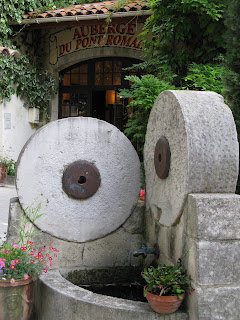
Marseille is a bustling city, with close links to the Middle East and North Africa. This is where you’ll find the famous Marseille soap, the origin to France’s anthem “La Marseillaise”, the Chateau d’If (Castle of Yew) commonly known as Alexandre Dumas’ location for “The Count of Monte Cristo”, and bouillabaisse (fish stew). (Bouillabaisse means: it boils and I lower.)




We visited this city twice and were able to take both routes of the tourist trains. One brought us to “Vieille Charité”, a former almshouse for the native poor, and through the Panier district where prostitutes and the mafia used to hang out.

The other train passed along some elegant mansions and up to the “Basilica of Notre-Dame de la Garde”, its popular name being “Bonne Mère”. We enjoyed the sentinels at the narrow entrance to the Vieux Port - the Forts of Saint-Jean and Saint-Nicolas - leading to the docks district, the fish market, the fancy yachts moored at the marina.

The famous Canebière street is long and steep, and “It goes all around the World…” at least this is what used to be sung by the old seamen. I had a personal interest in the Church of St. Vincent de Paul, SSVP being the society that I volunteered with for a number of years.

Despite its great assets, I thought it was a big port city, difficult to navigate because of its hilly terrain. It’s a city with a great history but unfortunately, too many of those links have burnt down or been destroyed.

















































